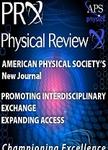版权所有:内蒙古大学图书馆 技术提供:维普资讯• 智图
内蒙古自治区呼和浩特市赛罕区大学西街235号 邮编: 010021

作者机构:Department of Computer Science University of California Irvine California 92697 USA Department of Physics and Astronomy University of California Irvine California 92697 USA Department of Chemical and Biomolecular Engineering University of California Berkeley California 94270 USA
出 版 物:《Physical Review D》 (物理学评论D辑:粒子、场、重力与宇宙学)
年 卷 期:2016年第93卷第9期
页 面:094034-094034页
核心收录:
学科分类:07[理学] 070201[理学-理论物理] 0702[理学-物理学]
基 金:Nvidia National Science Foundation, NSF, (1106400, 1321053, 1321053)
摘 要:At the extreme energies of the Large Hadron Collider, massive particles can be produced at such high velocities that their hadronic decays are collimated and the resulting jets overlap. Deducing whether the substructure of an observed jet is due to a low-mass single particle or due to multiple decay objects of a massive particle is an important problem in the analysis of collider data. Traditional approaches have relied on expert features designed to detect energy deposition patterns in the calorimeter, but the complexity of the data make this task an excellent candidate for the application of machine learning tools. The data collected by the detector can be treated as a two-dimensional image, lending itself to the natural application of image classification techniques. In this work, we apply deep neural networks with a mixture of locally connected and fully connected nodes. Our experiments demonstrate that without the aid of expert features, such networks match or modestly outperform the current state-of-the-art approach for discriminating between jets from single hadronic particles and overlapping jets from pairs of collimated hadronic particles, and that such performance gains persist in the presence of pileup interactions.